Tube lines in London are committed to providing accessibility options for all passengers, particularly those with mobility challenges. Key features include step-free access at major stations, accessible ticket machines, and onboard assistance services, ensuring a comfortable travel experience. To enhance your journey, utilize available resources that detail accessible routes and facilities.
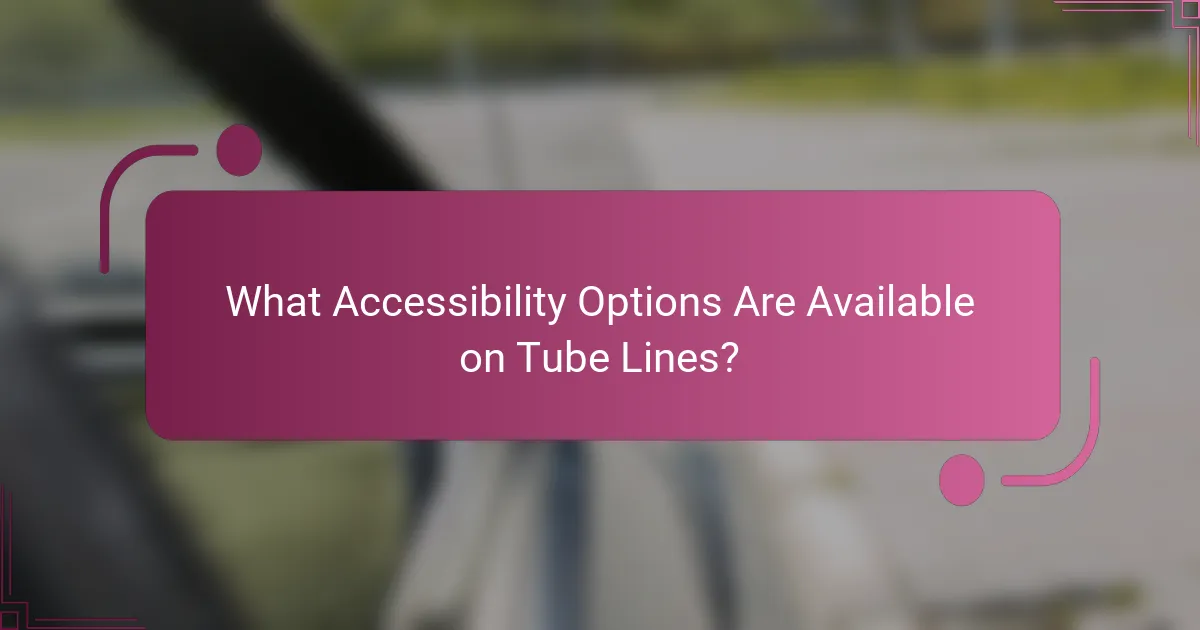
What Accessibility Options Are Available on Tube Lines?
Tube lines offer various accessibility options to ensure that all passengers, including those with mobility challenges, can travel comfortably. Key features include step-free access at major stations, accessible ticket machines, onboard assistance services, accessible toilets, and priority seating.
Step-free access at major stations
Many major Tube stations in London provide step-free access, allowing individuals with mobility impairments to enter and exit the stations without using stairs. Stations like King’s Cross St. Pancras and Liverpool Street are equipped with lifts and ramps.
To find out which stations offer step-free access, you can check the Transport for London (TfL) website or use their journey planner tool, which highlights accessible routes. It’s advisable to plan your journey in advance to avoid any inconveniences.
Accessible ticket machines
Accessible ticket machines are available at various Tube stations, featuring audio instructions and tactile buttons for ease of use. These machines allow passengers to purchase tickets without needing assistance from staff.
When using these machines, look for the accessibility symbol. They typically accept cash and card payments, making them convenient for all travelers. Familiarizing yourself with the machine’s layout can help speed up the ticket purchasing process.
Onboard assistance services
Onboard assistance services are available for passengers who require help during their journey. This includes staff members who can provide support when boarding and alighting from trains, as well as assistance with luggage.
To access these services, it’s recommended to inform the station staff in advance, ideally 24 hours before your travel. This ensures that appropriate arrangements can be made to accommodate your needs during the trip.
Accessible toilets
Accessible toilets are located in many Tube stations, designed to accommodate passengers with disabilities. These facilities are equipped with features such as grab rails and emergency alarms for added safety.
To locate accessible toilets, check the station’s signage or the TfL website, which provides detailed information on the availability of these facilities at each station. Planning your route with this in mind can enhance your travel experience.
Priority seating
Priority seating is designated for passengers who need extra support, including the elderly, pregnant women, and those with disabilities. These seats are clearly marked and located near the doors for easy access.
Passengers are encouraged to give up their seats for those in need. Being mindful of others can contribute to a more comfortable journey for everyone on the Tube.
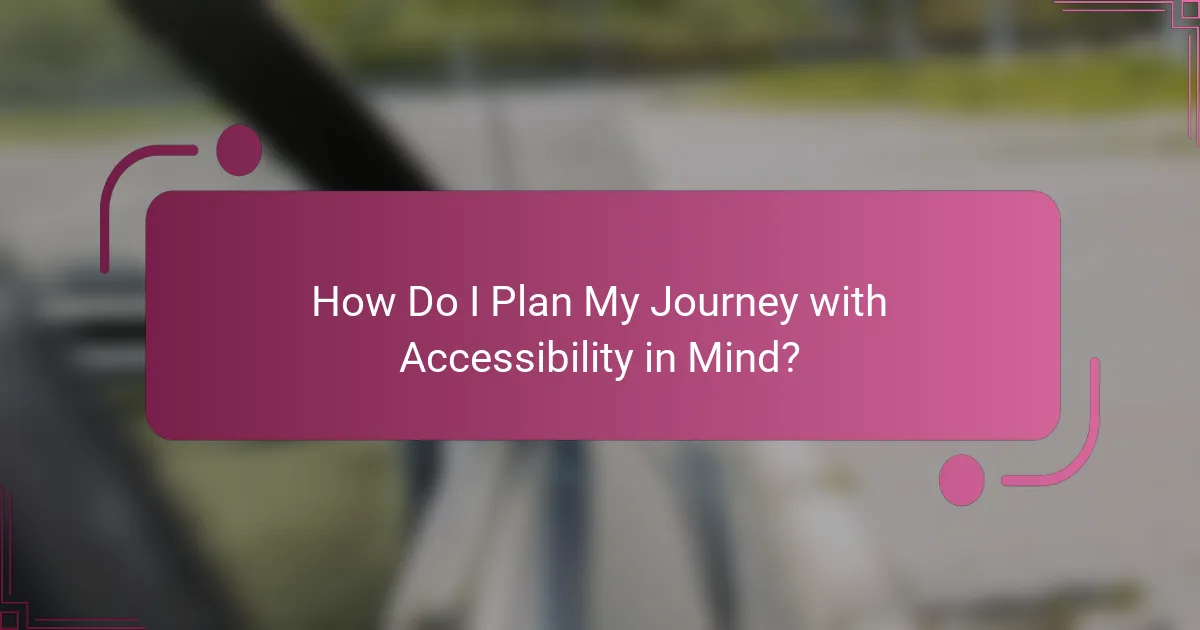
How Do I Plan My Journey with Accessibility in Mind?
To plan your journey with accessibility in mind, utilize tools and resources that provide information on accessible routes and facilities. This ensures a smoother travel experience, especially for those with mobility challenges or other accessibility needs.
Use the Transport for London (TfL) journey planner
The TfL journey planner is an essential tool for planning accessible travel across London. It allows you to input your starting point and destination while filtering options based on accessibility features such as step-free access.
When using the planner, select the ‘Accessibility’ option to view routes that accommodate wheelchairs or those needing assistance. This feature helps you avoid stations or lines that may not be suitable for your needs.
Check station accessibility information
Before traveling, check the accessibility information for the stations you will use. Each station on the TfL network provides details about facilities such as lifts, ramps, and tactile guidance paths.
Look for the accessibility icons on the TfL website or app, which indicate whether a station is step-free and what services are available. This can help you plan your journey more effectively and avoid unexpected obstacles.
Contact customer service for assistance
If you have specific questions or need additional support, contacting TfL customer service can be very helpful. They can provide real-time information about accessibility features and assist with any travel concerns.
Consider reaching out via phone or their online chat service, especially if you require assistance during your journey. TfL staff are trained to help passengers with accessibility needs, ensuring a more comfortable travel experience.
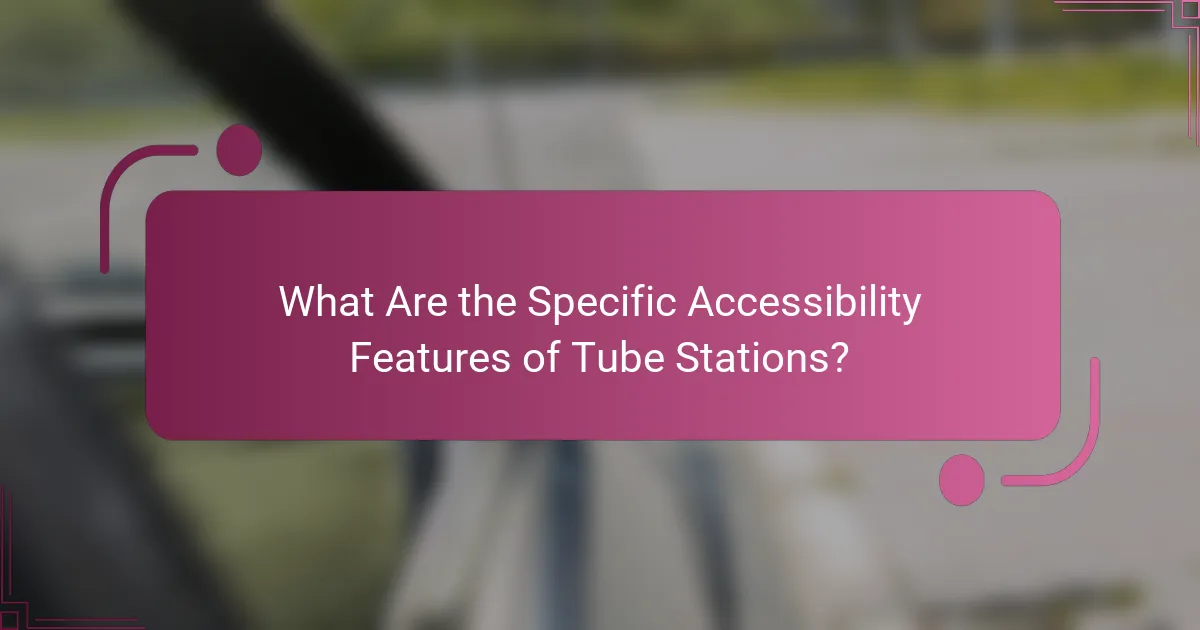
What Are the Specific Accessibility Features of Tube Stations?
Tube stations in London are equipped with various accessibility features designed to assist passengers with mobility challenges. These features include platform lifts, ramps, visual and audio announcements, and staff assistance options, ensuring a more inclusive travel experience.
Platform lifts and ramps
Many Tube stations have platform lifts and ramps to facilitate access for individuals using wheelchairs or with limited mobility. These lifts typically connect the street level to the platform, while ramps provide an alternative route where lifts are not available.
When planning your journey, check the Transport for London (TfL) website for information on which stations have these facilities. Not all stations are equipped with lifts, so it’s essential to know your route in advance.
Visual and audio announcements
Tube stations feature visual and audio announcements to assist passengers in navigating the system. These announcements provide real-time information about train arrivals, service changes, and safety instructions, catering to both visually impaired and hearing-impaired travelers.
Most trains are equipped with screens displaying upcoming stops, while audio announcements ensure that all passengers receive important updates. Familiarizing yourself with these features can enhance your travel experience.
Staff assistance availability
Staff assistance is available at many Tube stations to help passengers with accessibility needs. Trained personnel can provide support in navigating the station, boarding trains, and using lifts or ramps.
To ensure assistance is available when you need it, consider contacting the station in advance or using the TfL’s assistance booking service. This proactive approach can help avoid delays and ensure a smoother journey.
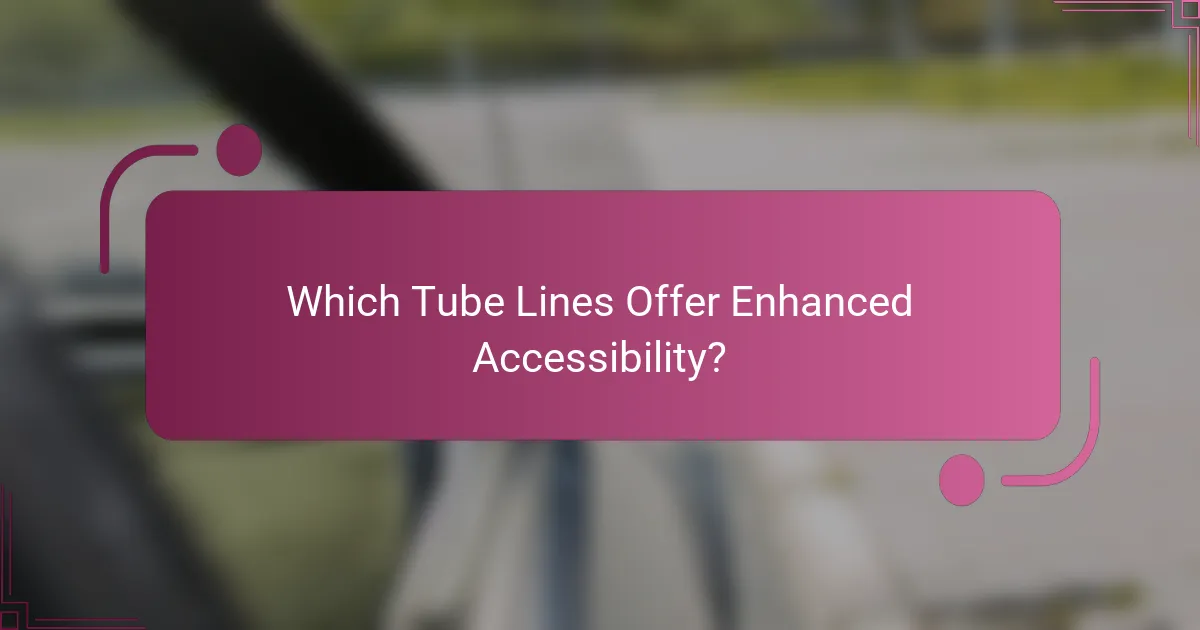
Which Tube Lines Offer Enhanced Accessibility?
The Jubilee, Central, and Victoria Lines are notable for their enhanced accessibility features, making them more user-friendly for individuals with mobility challenges. These lines include step-free access, lifts, and other facilities designed to assist passengers with disabilities or those traveling with strollers.
Jubilee Line
The Jubilee Line offers extensive accessibility options, including step-free access at several key stations such as Westminster, Canary Wharf, and London Bridge. Most of the line’s stations are equipped with lifts, making it easier for passengers with mobility impairments to navigate the system.
Additionally, the Jubilee Line features tactile guidance paths and audio announcements to assist visually impaired travelers. Passengers can also find designated seating areas for those who need them, ensuring a more comfortable journey.
Central Line
The Central Line has made significant strides in accessibility, with several stations like Liverpool Street and Oxford Circus providing step-free access. However, not all stations on this line are fully accessible, so it’s important to check the Transport for London (TfL) website for specific station information.
For those using the Central Line, audio-visual information is available on trains, helping passengers stay informed about upcoming stops. Accessibility staff are also present at major stations to assist travelers as needed.
Victoria Line
The Victoria Line is fully accessible, featuring step-free access at all stations, including major hubs like Victoria and Kings Cross. This makes it one of the most convenient options for passengers with mobility issues.
In addition to lifts, the Victoria Line provides clear signage and audio announcements, enhancing the travel experience for all passengers. Regular maintenance ensures that accessibility features remain operational, further supporting a smooth journey.
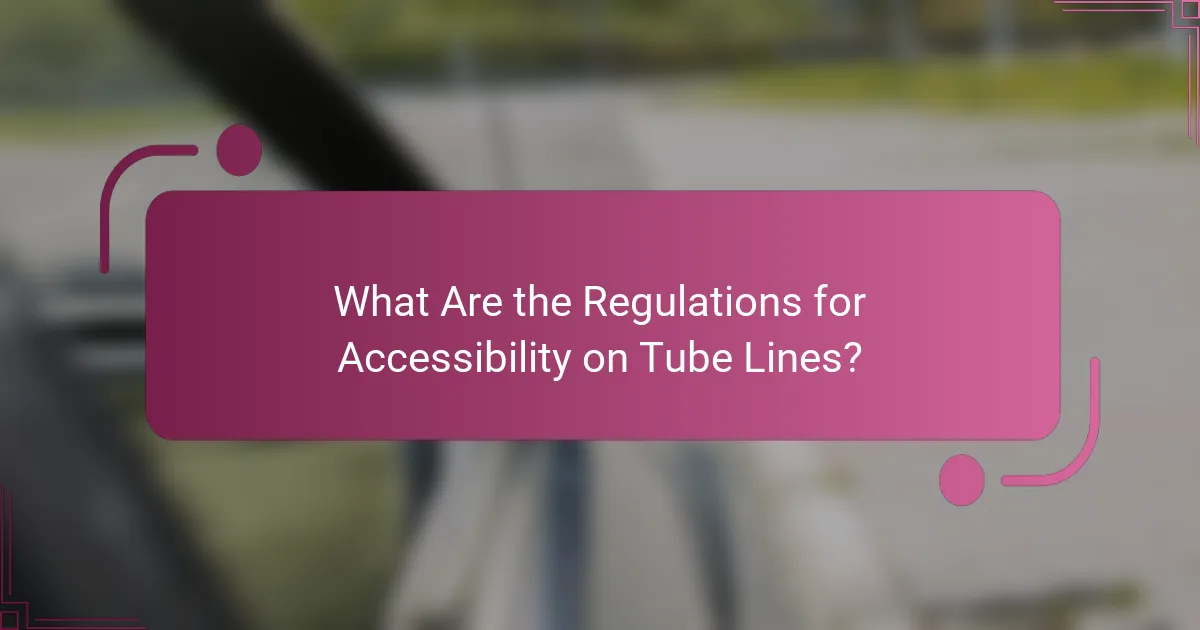
What Are the Regulations for Accessibility on Tube Lines?
Regulations for accessibility on Tube lines are primarily guided by the Equality Act 2010, which mandates that public transport must be accessible to all individuals, including those with disabilities. Transport for London (TfL) also sets specific standards to ensure that services meet these legal requirements and provide a practical experience for users.
Compliance with the Equality Act 2010
The Equality Act 2010 requires that public transport systems, including Tube lines, make reasonable adjustments to accommodate individuals with disabilities. This includes ensuring physical access to stations and trains, as well as providing assistance when needed.
Examples of compliance include installing ramps, elevators, and accessible toilets at stations. Operators must also train staff to assist passengers with various needs, ensuring a smoother travel experience for everyone.
Accessibility standards set by TfL
Transport for London has established specific accessibility standards that align with the Equality Act 2010. These standards focus on various aspects, such as station design, vehicle accessibility, and customer service protocols.
Key features include step-free access at many stations, visual and auditory information systems for announcements, and designated spaces for wheelchair users. TfL continuously evaluates and updates these standards to enhance accessibility across the network.
